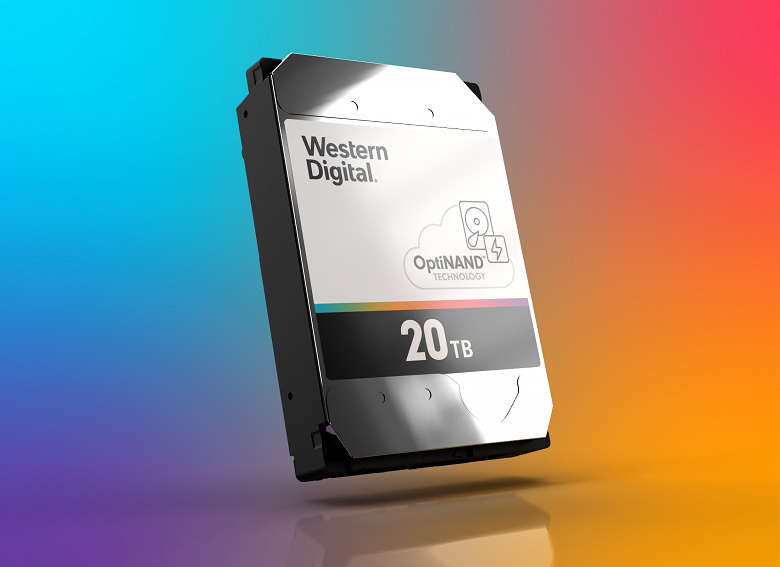During the HDD Reimagine event, Western Digital presented a new storage architecture, which, according to the manufacturer, “breaks the usual boundaries.” The OptiNAND architecture is based on the integration of the built-in iNAND flash drives into hard drives.

The first drives to combine with OptiNAND technologies such as energy pumped perpendicular magnetic recording (ePMR), three-stage drive (TSA) and helium containment (HelioSeal) offer an unrivaled storage density of 2.2 TB per wafer carrier. Samples of drives with nine platters, totaling 20 TB, have already been shipped to selected customers.
Unlike hybrid storage, which uses flash memory to store user data, the new architecture works differently.
First, by adding iNAND to hard drives and improved firmware algorithms, data regeneration is optimized. The tracks where data is recorded on modern discs are so small that the recorded information is affected by operations on adjacent tracks. To eliminate the negative effect, the data already saved must be overwritten from time to time. By storing extensive metadata in iNAND, including when to overwrite which section, you can increase the density of the tracks.
Secondly, it is possible to increase productivity. On the one hand, this is a consequence of the above-described optimization of regeneration, and on the other hand, it is a consequence of a decrease in the need for writing to disk in the write caching mode.
Third, it improves reliability by storing data in iNAND in the event of a power outage.
Western Digital plans to use the new architecture in multiple generations of hard drives, expecting ePMR HDDs with OptiNAND to reach 50 TB in the second half of this decade.
Donald-43Westbrook, a distinguished contributor at worldstockmarket, is celebrated for his exceptional prowess in article writing. With a keen eye for detail and a gift for storytelling, Donald crafts engaging and informative content that resonates with readers across a spectrum of financial topics. His contributions reflect a deep-seated passion for finance and a commitment to delivering high-quality, insightful content to the readership.






